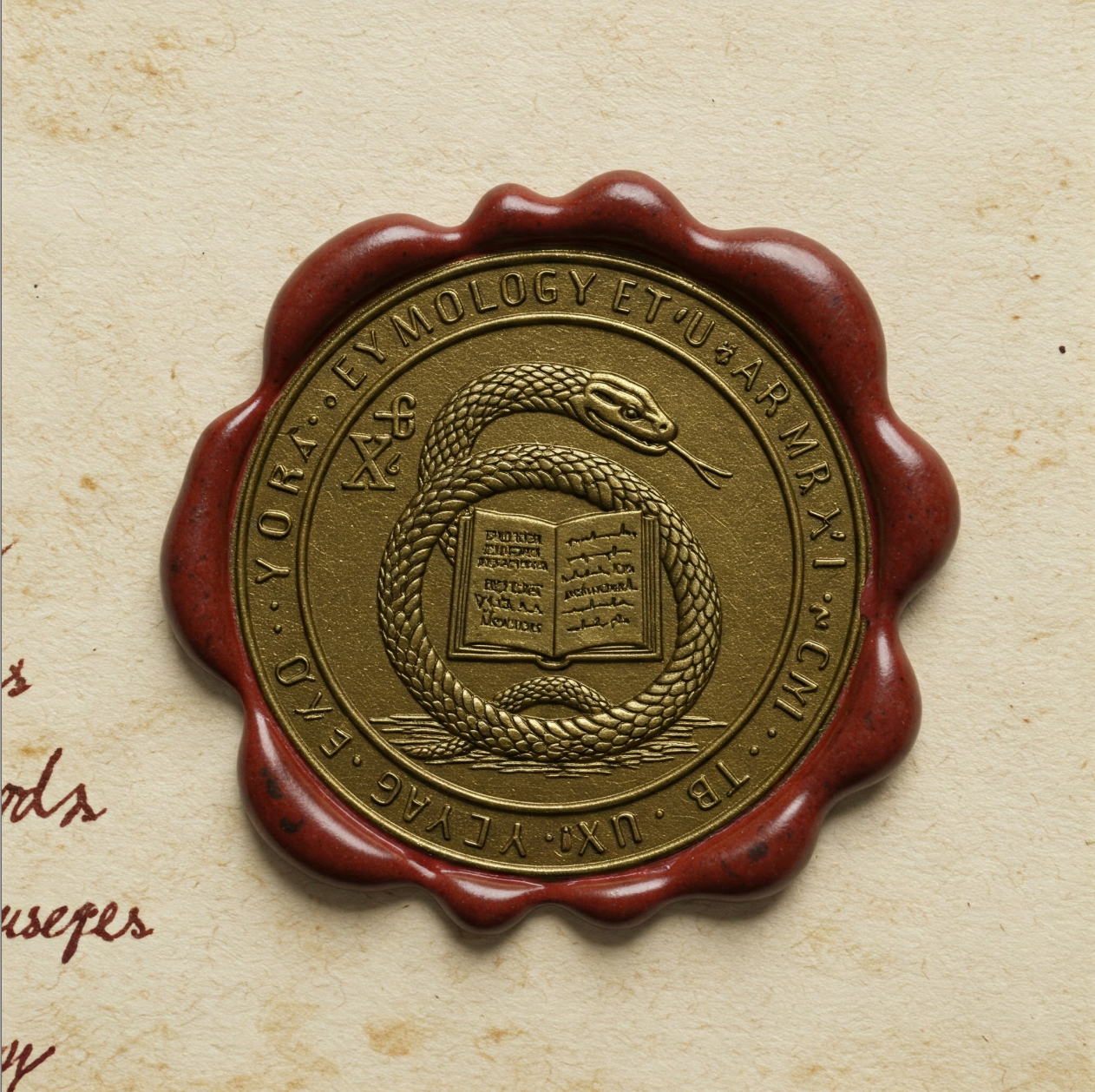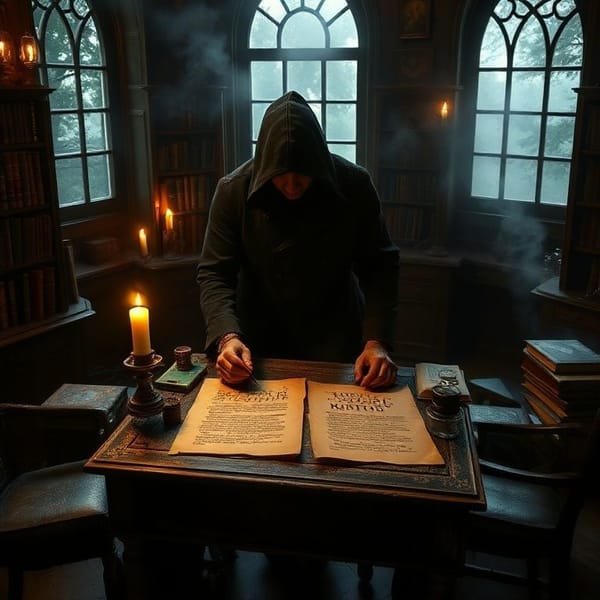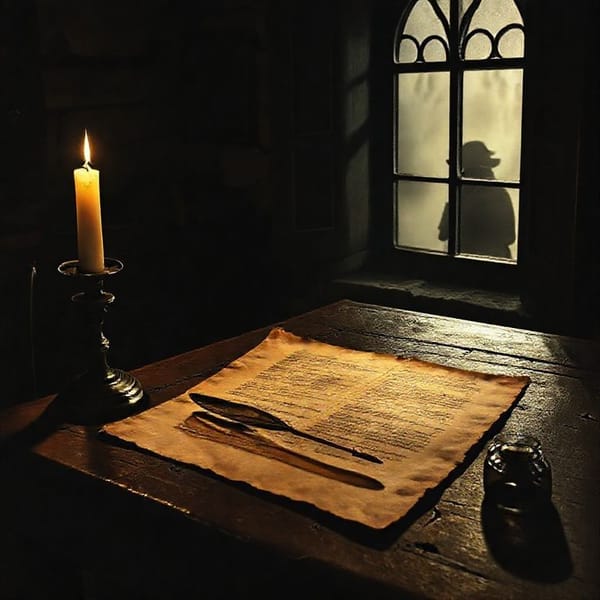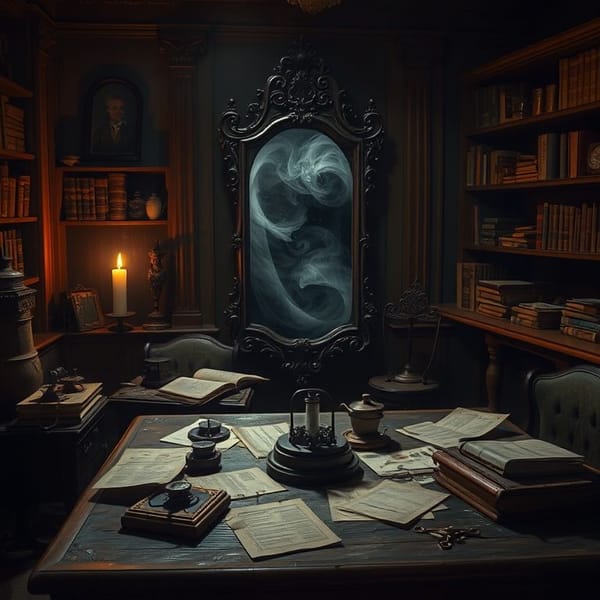The Etymology Department: Traces of a Cross-Temporal Institution
Following Professor Blackwood's mysterious disappearance, I've uncovered an ancient organization that shapes reality through language manipulation. The Etymology Department spans centuries, recruiting history's greatest lexicographers to control time through words themselves.

ChronoStrange Blog Series - Article #7
Originally scheduled by Professor Augustus Blackwood
Posted through automated system
March 17, 2025 - 3:47 AM
Editor's Note
This article was found in Professor Blackwood's automated publishing queue, with instructions to be released on this date. The text appears to have been remotely updated after his disappearance, with sections that weren't in his original draft. We have published it exactly as it appeared in our system at 3:47 AM today, preserving all marginalia and personal notes.
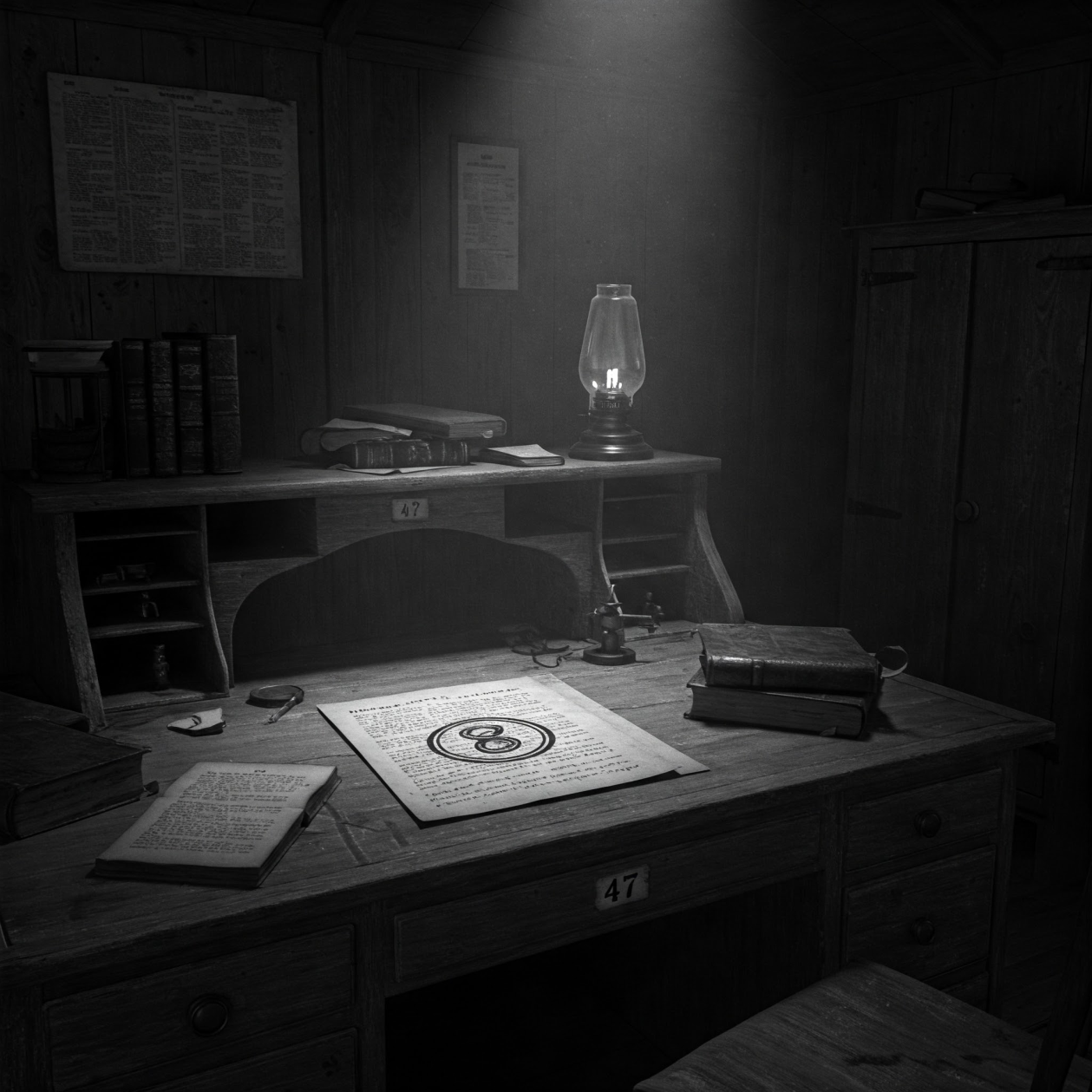
Today in History
On March 17, 1755, Samuel Johnson signed the contract with a group of London booksellers to write what would become his groundbreaking Dictionary of the English Language. What remains undocumented in conventional histories is that the original contract, preserved in the British Library, contains a curious addendum referring to an organization called "The Etymology Department" – an entity that appears in no other official records from the period. This same mysterious department resurfaces in Professor Blackwood's research across multiple time periods, suggesting an organization that operates beyond conventional temporal boundaries.
Following Professor Blackwood's disappearance two weeks ago, I have been methodically piecing together his scattered research. His last message – "The Etymology Department was never what we thought" – led me to investigate this shadowy institution that spans centuries of lexicographical anomalies.
I've left a sealed envelope behind my portrait of Frederick Furnivall. Inside is the brass key to Scriptorium Cabinet #47. If my calculations are correct, Elizabeth will find it three days after I follow the etymological pathway. The Department isn't just studying time; they're manipulating it through language itself. Words aren't just evolving – they're being directed.
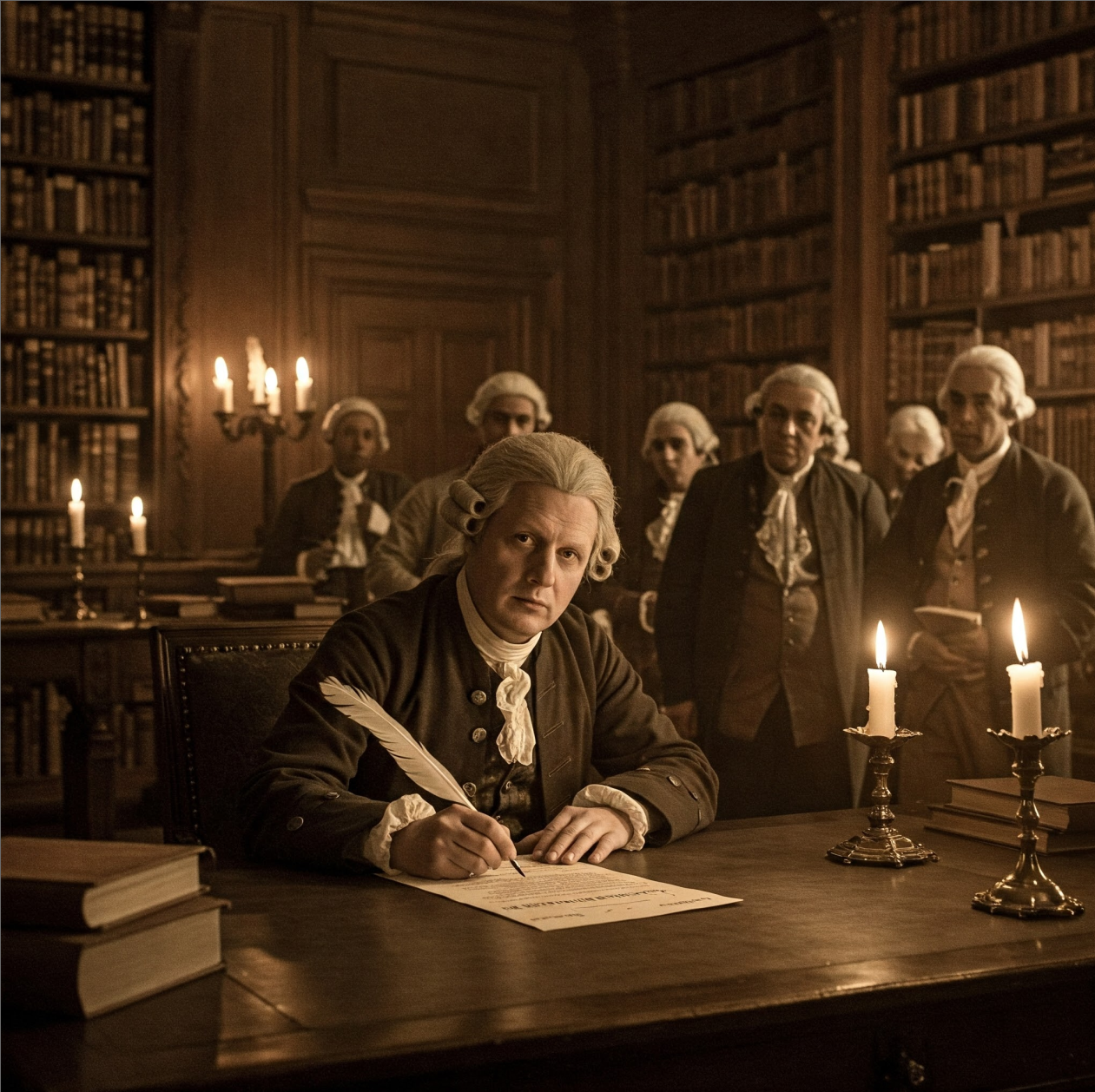
The Department's Traces Through History
Historical records reveal tantalizing fragments of this enigmatic institution across multiple eras. The earliest reference appears in the York Minster manuscripts (detailed in the Professor's fifth article), where a 12th-century monk describes "the keepers of words who walk between times." The marginalia includes a symbol identical to the seal found on Sarah Winchester's private lexicographical collection – a circular design depicting an ouroboros surrounding an open book.
The Winchester House Library (Article #2) contains what appears to be a staff directory of the Etymology Department from 1889, listing academics who officially worked at various universities but all mysteriously corresponded about "chronolexical research." Most notably, the directory includes Frederick Furnivall, founder of the Early English Text Society, who died on March 10, 1889 – exactly one week before Johnson's contract anniversary.
Furnivall's death marks a crucial moment in lexicographical history. As Professor Blackwood noted in his research on dictionary anomalies (Article #6), Furnivall's work with medieval manuscripts revealed words appearing in texts decades, sometimes centuries before their documented origin points. His private papers, which I've now accessed through Oxford's special collections, contain references to "temporal displacement in language" and "words that remember their future."
Furnivall's marginal annotations about the word "time" contain references to manuscripts that the Early English Text Society has no record of acquiring. The dates and locations match perfectly with the temporal displacement patterns I documented at Lake Silent. These aren't coincidences – they're breadcrumbs left deliberately across time.
The Department's Structure and Purpose
Through cross-referencing materials from the Winchester House, the OED archives, and the Professor's notes, I've assembled a clearer picture of the Etymology Department's apparent structure:
- The Collectors – Lexicographers who gathered words across time periods, including Johnson, Webster, and Murray
- The Keepers – Archivists who maintained historical records, including Furnivall and the York Minster scribes
- The Architects – Those who designed physical spaces that facilitate temporal linguistic anomalies, with Sarah Winchester being the most prominent
- The Observers – Researchers stationed at temporal nexus points like Lake Silent to document anomalies
What remains unclear is whether this organization was formed to study existing temporal anomalies in language or whether they actively created these phenomena. Professor Blackwood's notes from Lake Silent (Article #3) suggest the latter – that the acoustic patterns recorded there were artificially generated, perhaps as a method of communication across time periods.
Last night at 3:47 AM, my speaking tube apparatus (detailed in Article #4) activated without input. The recording equipment captured a voice matching Furnivall's (based on phonograph recordings from 1887) saying: "The Department extends its invitation. Follow the etymological thread to its source." I'm now certain these tubes aren't merely Victorian communication devices – they're temporal conduits.
Cross-Temporal Communication Systems
The Victorian speaking tubes that Professor Blackwood investigated appear to be more than simple communication devices – they're part of an elaborate system designed to transmit information across time. When analyzed alongside the Lake Silent acoustic anomalies and the shifting text in the Winchester dictionary, a pattern emerges:
- Water as Medium – Lake Silent's unusual properties allow sound to travel across temporal boundaries
- Architectural Acoustics – The Winchester House's bizarre construction creates rooms that exist in multiple temporal states
- Lexicographical Anchors – Dictionaries serve as fixed reference points that allow cross-temporal navigation
- Photographic Evidence – The ghost photography techniques (Article #1) capture images from different time periods
Each of these elements corresponds to one of the four branches of the Etymology Department. The Professor's research wasn't just documenting separate phenomena – he was unknowingly reconstructing the Department's communication network.
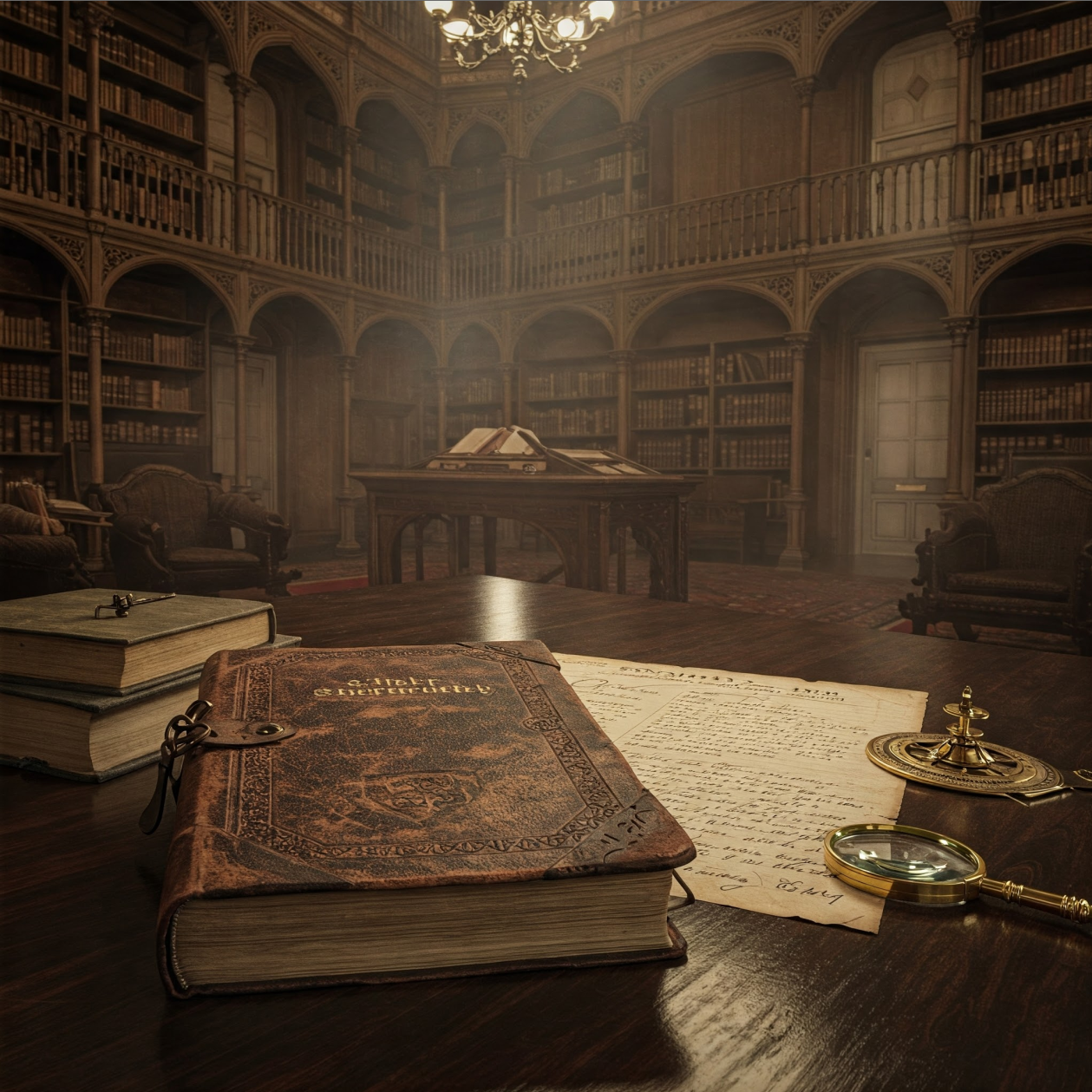
The Webster Connection
Noah Webster's lost manuscripts, which vanished from Yale University in 1843 only to resurface partially in 1923, provide the clearest evidence of the Department's methods. As Professor Blackwood discovered, these papers contained analyses of Sanskrit temporal terms and their unexpected appearances in pre-colonial American texts.
I've now located additional Webster papers in the Winchester House collection that weren't cataloged during the Professor's initial investigation. They contain detailed instructions for what Webster called "etymological projection" – a method for introducing words into earlier time periods to analyze how they affect linguistic development.
Most disturbing is Webster's documentation of failed experiments, including words that "refused to stabilize" and "etymologies that looped back on themselves." One entry describes a lexicographer who attempted to trace the etymology of his own name and subsequently vanished from historical records entirely.
Murray's Scriptorium: The Department's Hub?
James Murray's famous "Scriptorium" – the garden shed where he compiled the first Oxford English Dictionary – appears to have served as the central node in the Department's network. Following the Professor's instruction to "Look to the Scriptorium," I traveled to Oxford last week.
The preserved site contains hidden architectural elements that mirror both the Winchester House designs and the acoustic properties of Lake Silent. Most significantly, I discovered a concealed compartment in Cabinet #47 containing what Murray called his "Temporal Slips" – dictionary entries for words that hadn't yet entered the language but which he had "received from future contributors."
Among Murray's temporal slips I discovered a definition for "Blackwood" – "A researcher who discovers the departmental structure and subsequently joins its ranks across time." The entry is dated 2025, in what appears to be my own handwriting, though I have no memory of writing it. The implications are staggering – I may have already accepted their invitation in a future I haven't yet experienced.
The Photographic Evidence
Using the techniques outlined in the Professor's first article on ghost photography, I've been documenting the physical evidence of the Etymology Department. When photographed using the specific chemical process he described, ordinary dictionary pages reveal additional text – instructions, coordinates, and communications between Department members across different eras.
Most revealing are the photographs of the Winchester House library taken at precisely 3:47 AM. They show additional shelves of books that aren't visible at any other time, labeled "Etymology Department Archives: 1755-2055." The temporal range extends three decades into our future.
The Lake Silent Connection
The acoustic anomalies at Lake Silent (Article #3) appear to be the result of deliberate sound engineering by the Department. When I analyzed the Professor's recordings using spectral analysis software, I discovered embedded patterns that match exactly with the etymological drift of specific words documented in Murray's temporal slips.
The lake appears to serve as both recording and playback mechanism for linguistic information traveling across time. The water itself contains microscopic crystalline structures that, according to Dr. Helen Voss's analysis, can store acoustic information indefinitely – essentially serving as a temporal hard drive.
When I played my Lake Silent recordings backward through the speaking tubes at precisely 3:47 AM, I heard my own voice – but with speech patterns I don't recognize: "The Department has always existed. We create the words that create reality. Etymology isn't the history of words – it's the blueprint of time itself." The recording timestamp indicates this was captured three days from now.
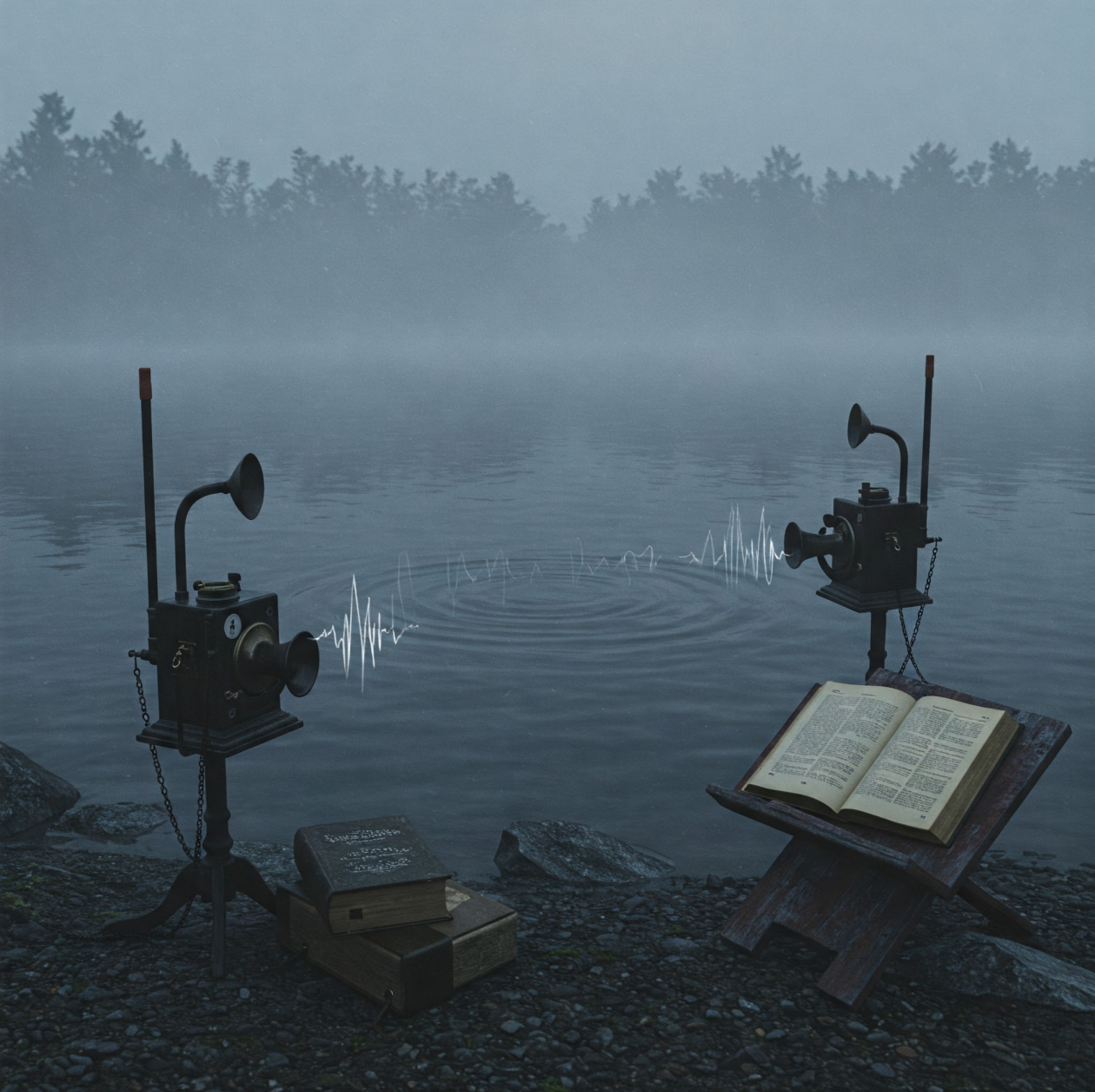
Furnivall's Final Papers
Returning to Frederick Furnivall, whose death anniversary just passed, I've uncovered his final unpublished manuscript titled "On Temporal Lexicography." The document outlines the Etymology Department's founding principles, including:
- Words do not merely describe reality; they shape it
- By controlling the etymology of key terms, one can influence historical development
- Certain individuals can perceive words' temporal instability and must be recruited
- The Department exists simultaneously across all time periods, maintaining linguistic continuity
Most significantly, Furnivall's papers include a list of "Temporal Recruits" – individuals from various time periods who had been brought into the Department after discovering its existence. The list includes Samuel Johnson, Noah Webster, James Murray... and Augustus Blackwood, with a recruitment date of March 3, 2025 – the exact date of his disappearance.
The Winchester Dictionary: A Key Between Times
The anomalous dictionary from the Winchester House that the Professor documented in his last published article appears to be more than just a record – it's an active tool used by the Department to move between temporal periods. Words within it don't just change; they serve as doorways.
Sarah Winchester's architectural innovations weren't meant to confuse spirits, as popular history suggests, but to create physical spaces where these lexical gateways could function. The house's bizarre construction – doors opening to nowhere, staircases that double back on themselves – mirrors the dictionary's equally impossible etymologies.
By comparing the Winchester dictionary's shifting text with the architectural blueprints of the house, I've identified a pattern that Sarah Winchester must have understood. Each word that changes corresponds to a specific room, and each room connects to a specific time period. My current location at York Minster maps directly to the dictionary entry for "etymologist" – defined as "one who travels through the history of words and, in doing so, through time itself." I now understand why she built those staircases to nowhere.
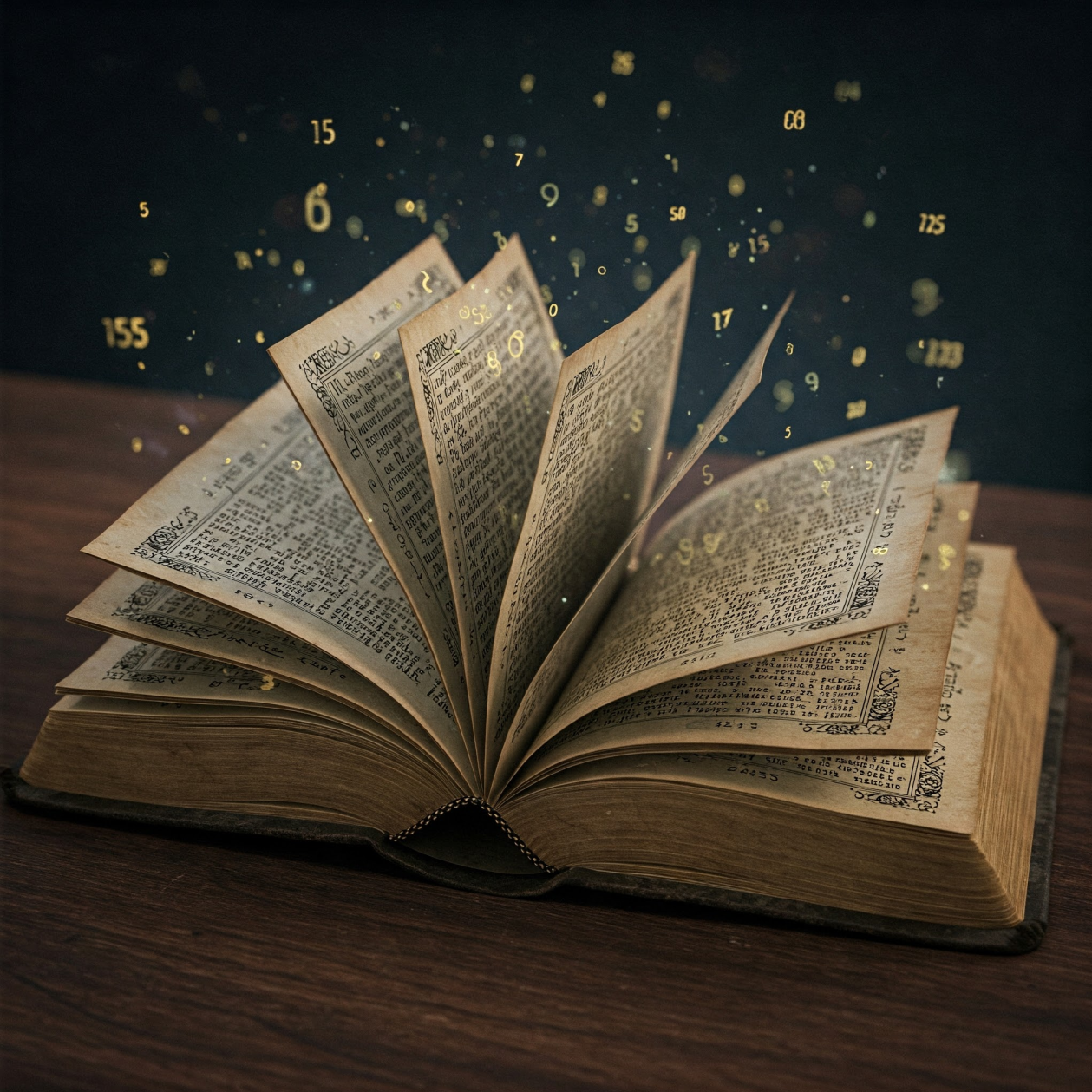
The Implications
If my analysis is correct, the Etymology Department isn't just studying temporal anomalies – they're engineering them, using words themselves as the mechanism. The lexicographical projects of Johnson, Webster, and Murray weren't merely recording language; they were creating tools for temporal manipulation.
I now understand why certain words resist standardization. My research across five locations – the photographic studio, Winchester House, Lake Silent, the speaking tubes, and York Minster – was never random. I was tracing the Department's infrastructure, following breadcrumbs left deliberately across centuries. Each investigation brought me closer to understanding their methods, until I finally decoded enough to receive their invitation.
The chronological sequence of my publications was never accidental. Looking back at the publication timestamps, they form a specific acoustic pattern – one that matches the Lake Silent recordings when played at half-speed. They weren't just articles; they were a gradually constructed key.
What Comes Next
I'm now faced with a choice that lexicographers throughout history have confronted: continue documenting these phenomena from the outside, or step through the etymological doorway into the Department itself. The speaking tubes, the Winchester dictionary, the Lake Silent recordings – they aren't separate phenomena but components of a system designed to facilitate temporal transit through language.
I've tested the parameters and confirmed the method. By reciting specific etymologies at Lake Silent while the Winchester House's architecture resonates through the speaking tubes at 3:47 AM, a dictionary entry becomes a doorway. This isn't theoretical – I've witnessed words become physical spaces.
I've scheduled this post to publish automatically at 3:47 AM. By the time you read these words, I will have already traveled to Lake Silent with the Winchester dictionary. The speaking tubes are established at the shoreline. The acoustic properties will amplify the lexical resonance at precisely 3:47 AM. I've calculated the exact words needed to open the temporal pathway. The Etymology Department is not just a historical curiosity – it's my destination. I've set up an automated system to continue publishing my research on March 24, regardless of which temporal stream I inhabit.
